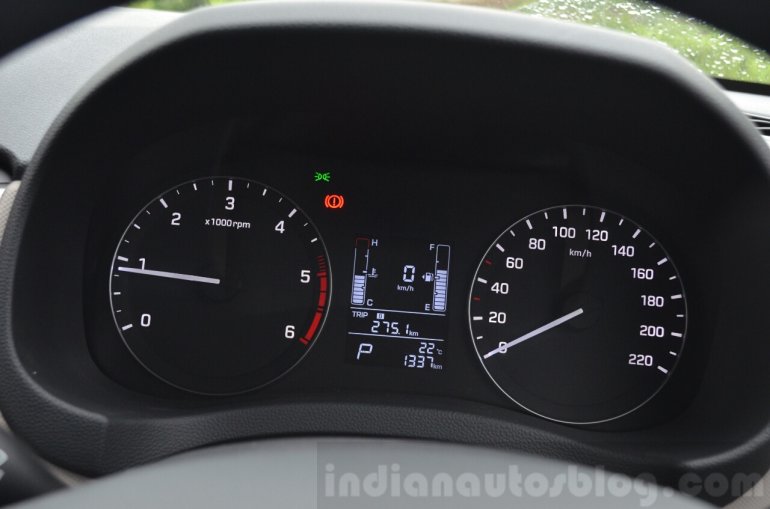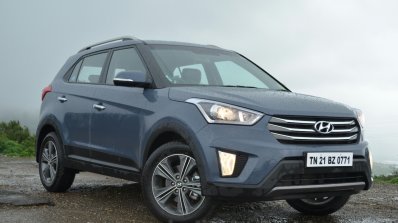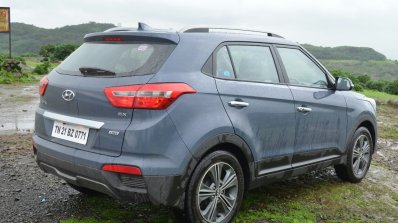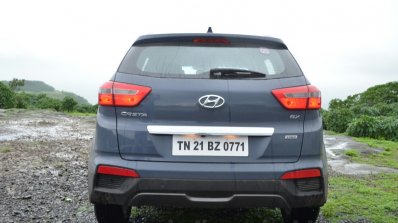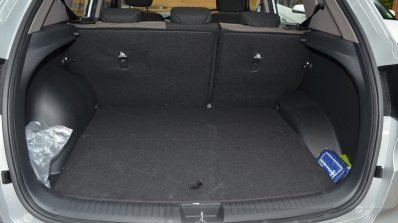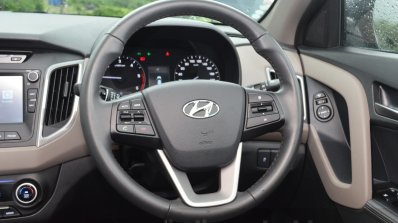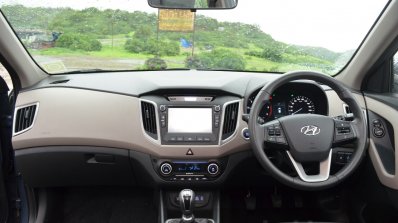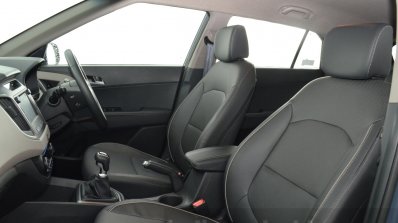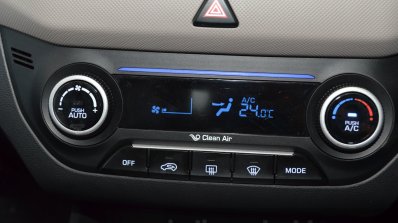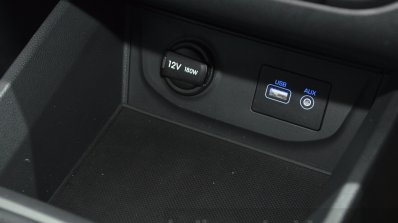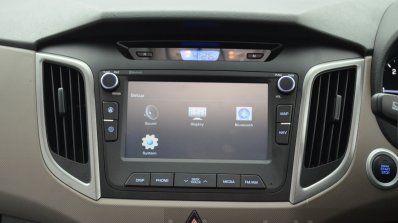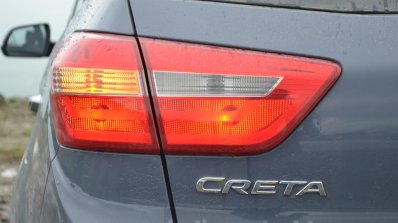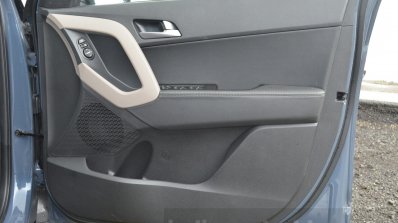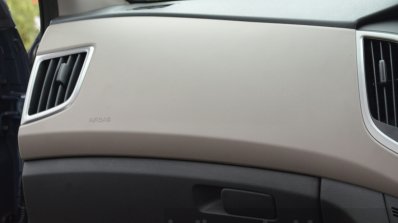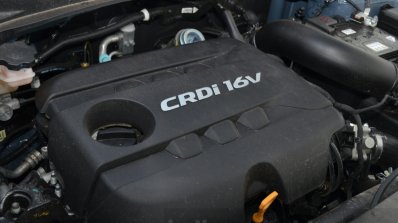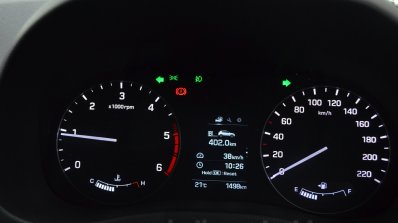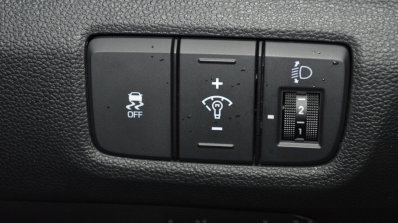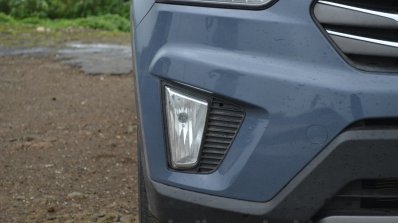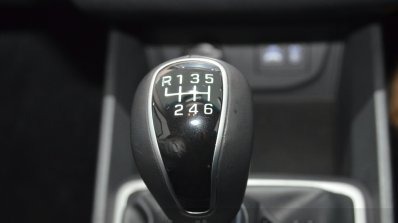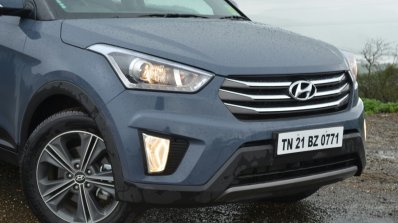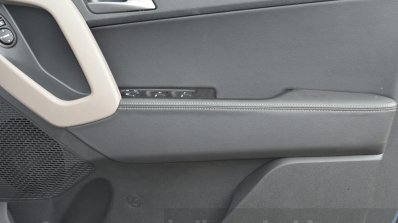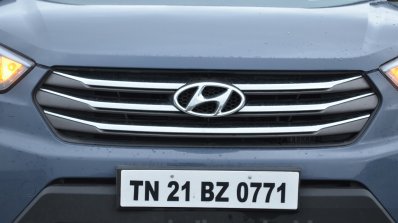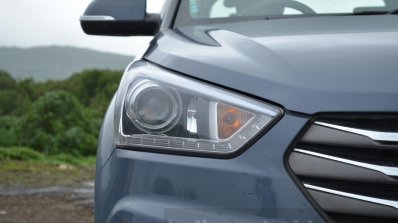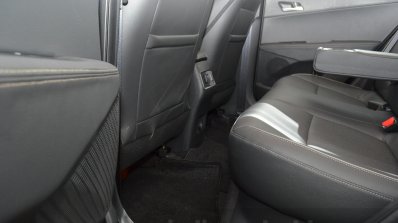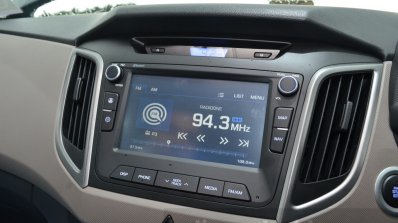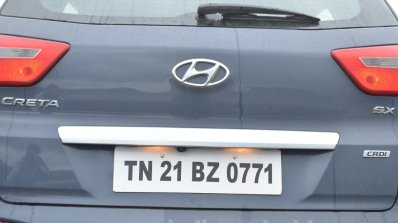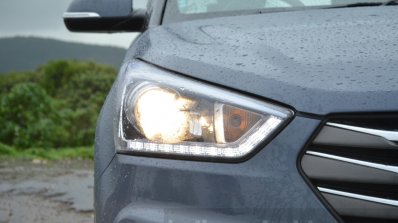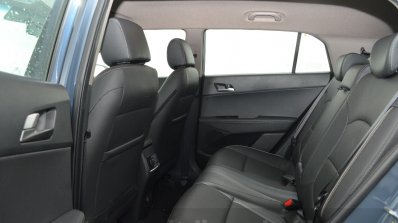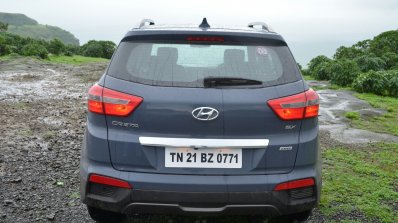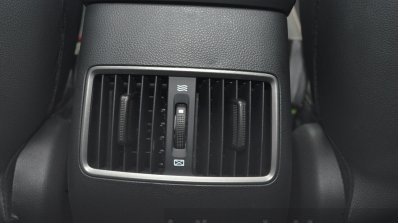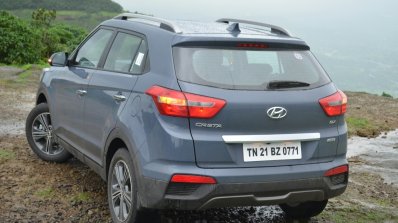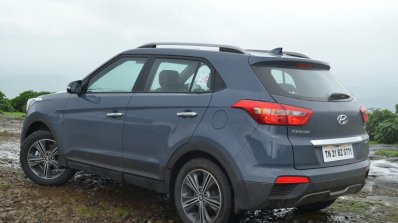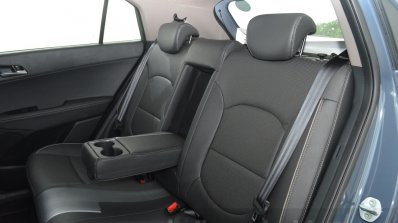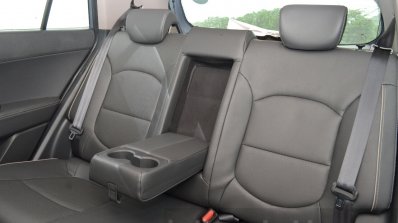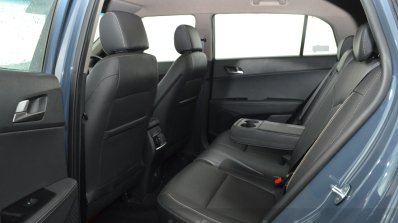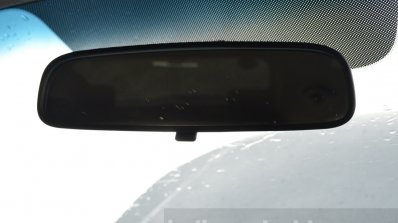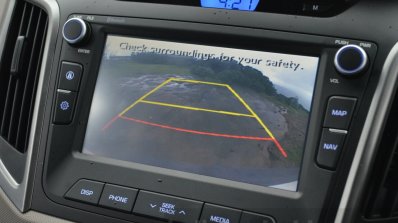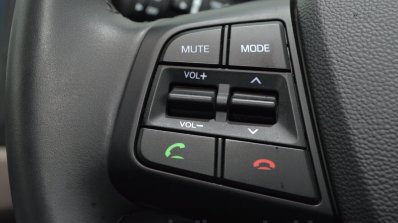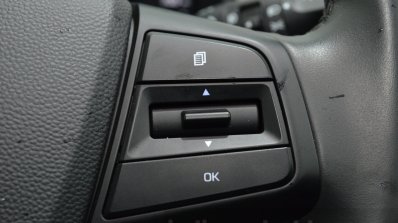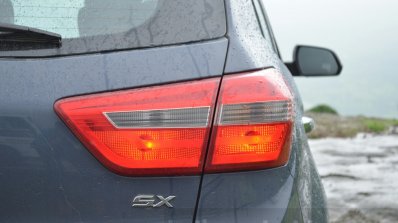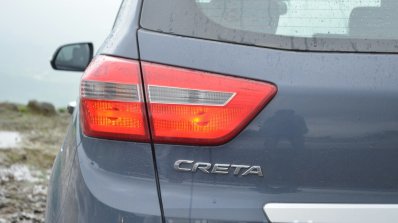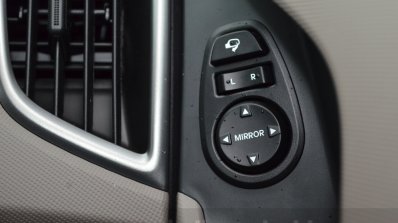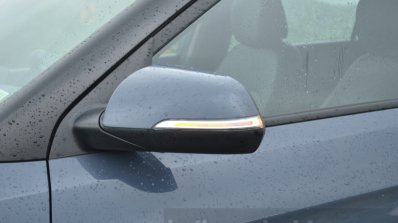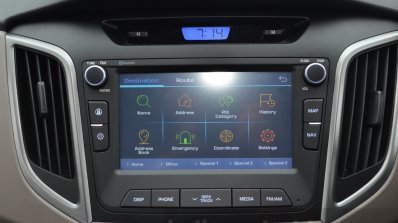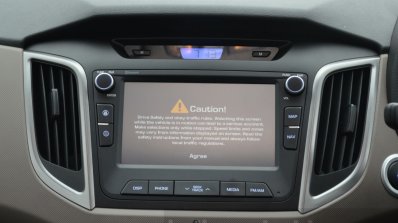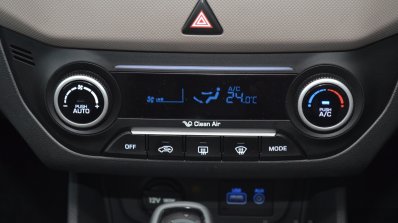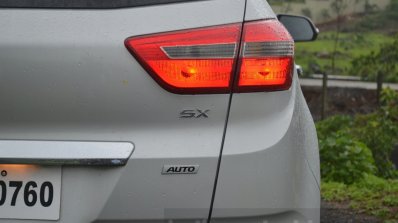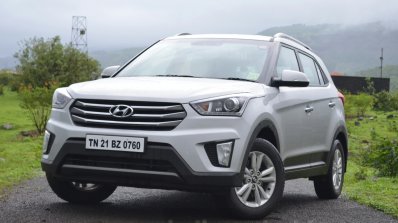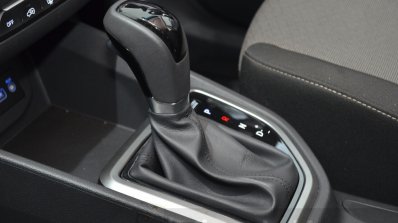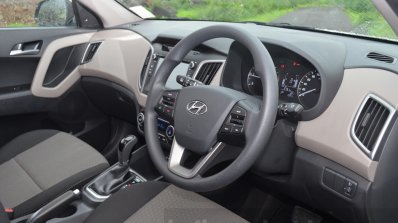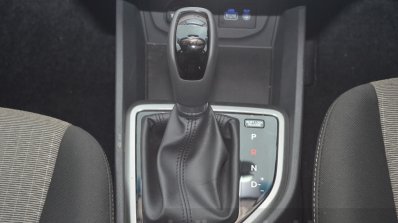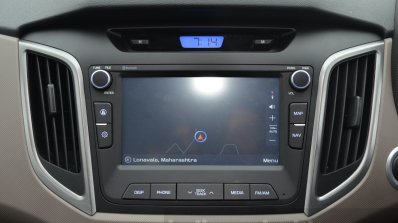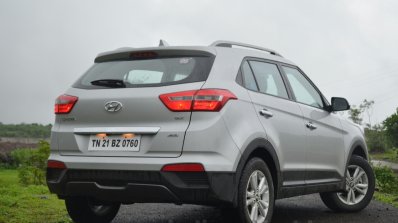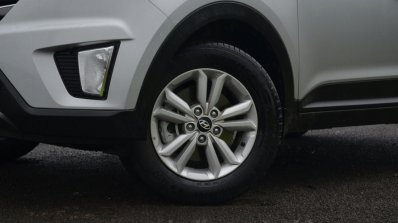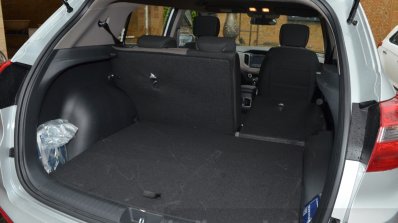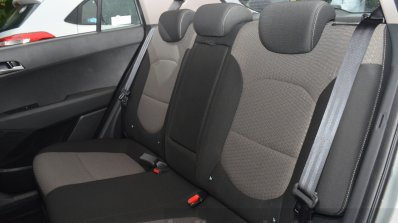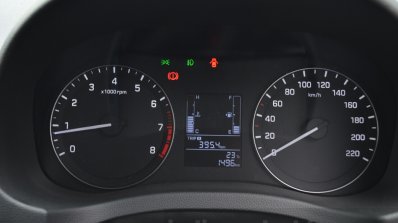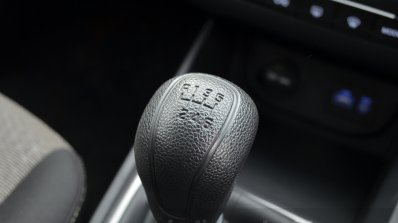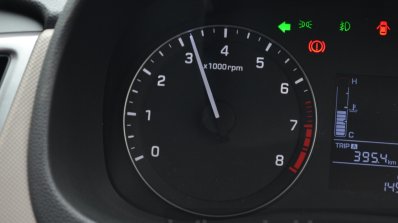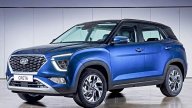Hyundai Creta - Review
Hyundai Motor India Ltd. (HMIL) launched its much awaited compact SUV, the Creta last week. While its pre-launch saw plenty of buzz and anticipation, post the launch, after the prices were released especially, questions were asked: Is HMIL being too optimistic? Why pay a whopping INR 3.4 lakhs over an EcoSport? Why buy a top-end Creta 2WD when for the same price you can have a 4WD Renault Duster?
Our first drive review aims to answer some of these questions.
Exterior:
As mentioned in our earlier review, the Creta looks the part of what insiders like to call a ‘mini Santa Fe’, with its Fluidic Design neatly integrating with a Storm Edge-inspired front fascia.
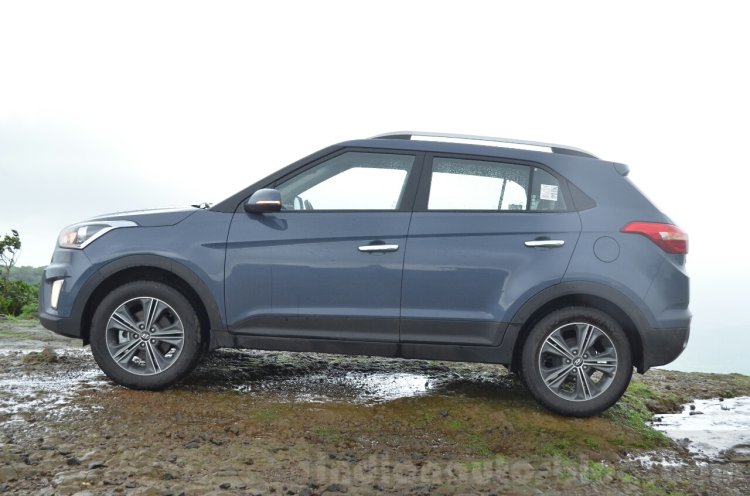
The front, side and rear-quarter angles are clearly the defining aspects of the Creta, while the full-rear view appears a bit bland, the chrome registration plate enclosure (an India-specific change over the ix25) not helping that much either.
For the number aficionados, here are the dimensions of the Creta: It measures 4,270 mm in length, 1,780 mm in width, 1,630 mm in height, 2,590 mm in wheelbase and 190 mm in ground clearance. The SX (O) variant, exclusive to the 1.6-liter diesel MT variant, gets 17-inch alloy wheels, whereas other models make do with 16-inch ones.
Interior:
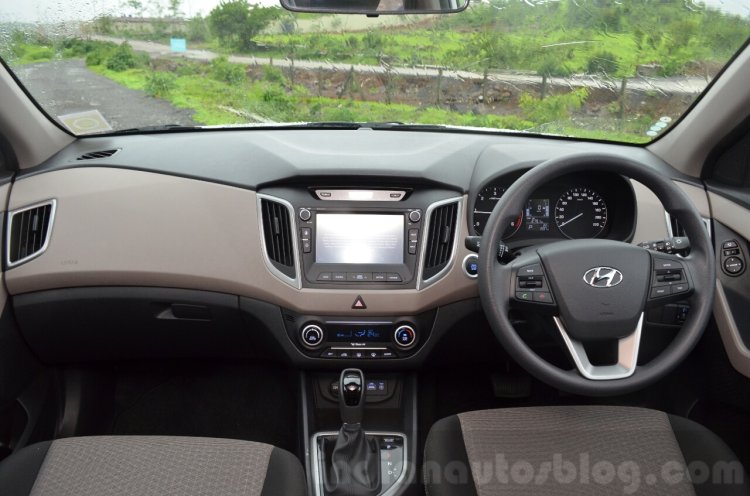
In the look and feel aspect, Hyundai have done a great job in executing the cabin of the Creta. The dual-tone dashboard is yet another India-specific change commissioned by HMIL, though we feel an all-black dashboard could have been offered as an option as well.
The dashboard of the Creta is neatly laid out with clear-to-read instruments and well-appointed plastics. As we highlighted in our preview, the Creta offers a feel-good experience right from the time you open the vault-like doors, and feel the leather-padded door armrests, the contrast stitching that accompanies it, the general quality of materials used and so forth: Basically, Hyundai have paid good attention to detail, what is otherwise ignored in this segment.
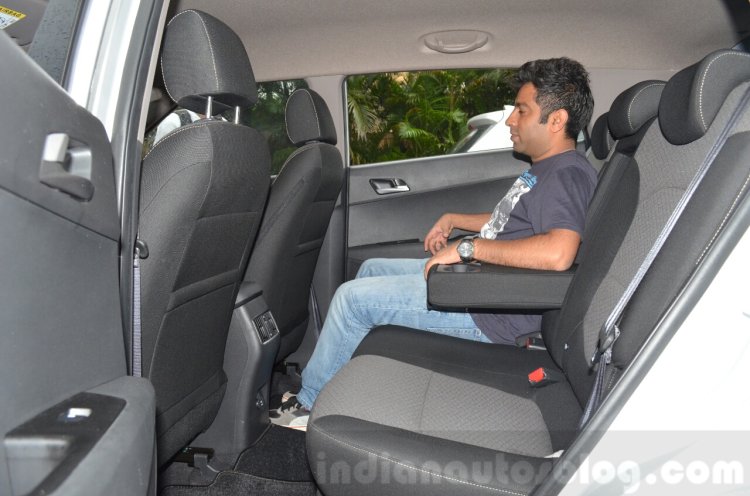
The SX (O) gets perforated leather seats, while other variants get fabric upholstery. The compact SUV scores rather well on seat comfort, with both the front and rear offering adequate support for your back and thighs.
What also becomes evident is that at no time do you find yourself complaining about the space on offer. Put a six-footer up front, and a similarly-sized adult will have no problems seated behind them; the rear legroom is the first place to look at if you wish to compare the Creta to the sub-4 meter EcoSport.
Coming to the boot, the Creta offers luggage carrying capacity of 402 liters with all seats in place. The Creta AT is the only variant to get a 60:40 split-folding rear seat, as other models get a single-piece rear seatback.
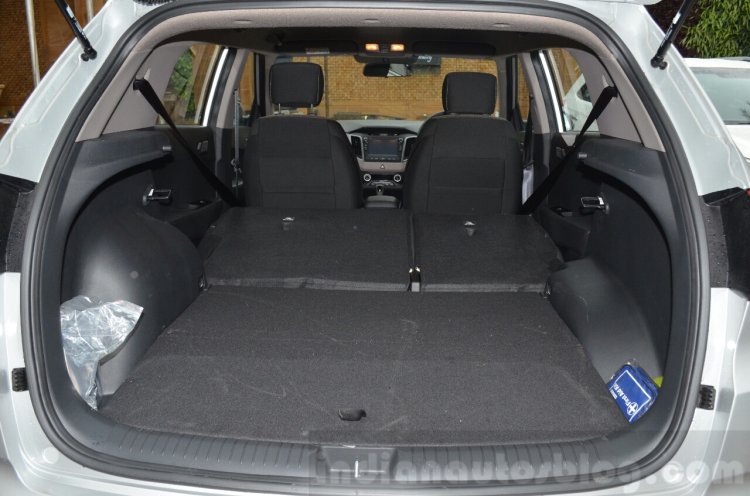
Still, sitting inside the Creta, you do feel like you’re in a car which costs INR 13 lakhs, no doubt about that. That being said, a few features could have been included to make the package more complete. Features we thought were missing include cruise control, rake adjustment for the steering wheel, a fore-and-aft adjustable front center armrest, automatic day/night rear view mirror (considering even the i20 comes with this), split-folding rear seats on the MT variants, and lumbar adjustment for the driver’s seat.
Engine and Gearbox:
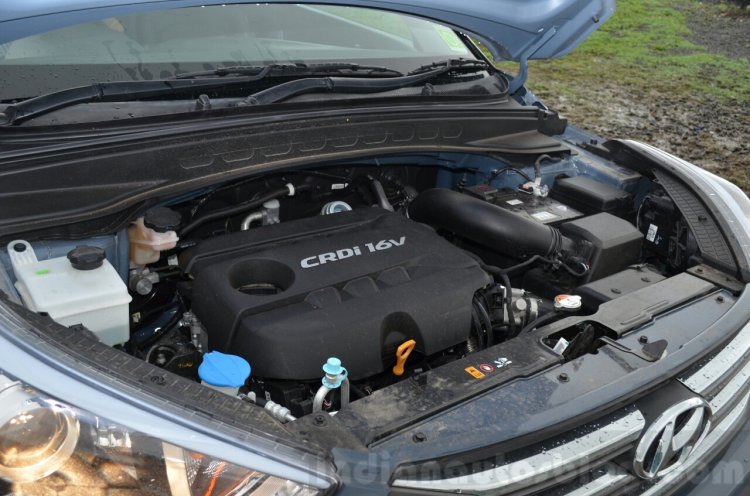
The Creta comes with three engine options of which we sampled two - the 1.6-liter diesel and petrol variants.
The 1.6L Creta diesel packs 128 PS and 265 Nm of torque, identical to the Verna with which it shares engines. However, engineers have calibrated this motor to match a sportier driving nature, which clearly showed within the first four gearshifts of our drive.
Outright performance feels marginally better than the Verna diesel, in that the Creta is more free-revving, and mid-range punch is more pronounced than the sedan. Post 2,000 rpm is where this engine really comes alive, with a steady wave of torque briskly helping you pile on the speed.
Even off-boost, the Creta feels marginally quicker than a Verna, and is very comfortable doing 20 km/h in third gear, or 40 km/h in fourth.
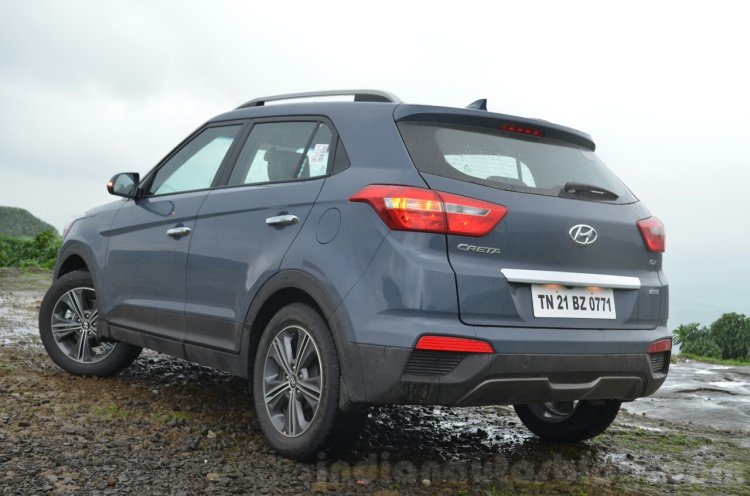
Where this engine really shines though is on the highway, where it has no problems holding on to speeds north of 100 km/h, with the engine noise barely making its way into the cabin. Did we forget to mention that the NVH aspect, like other Hyundai products, is best by a country mile? For reference, the Creta ticks about 2,000 rpm while cruising at 100 km/h in 6th gear.
It is with this aspect - that the Creta feels extremely comfortable on the highways - that we feel Hyundai should have included cruise control, at least on this engine variant.
The 6-speed box feels slick to use, and the clutch is much lighter than what you get on a Renault Duster. However, we felt the clutch travel to be a shade on the longer side, which is more of something to get used to than something of a complaint.
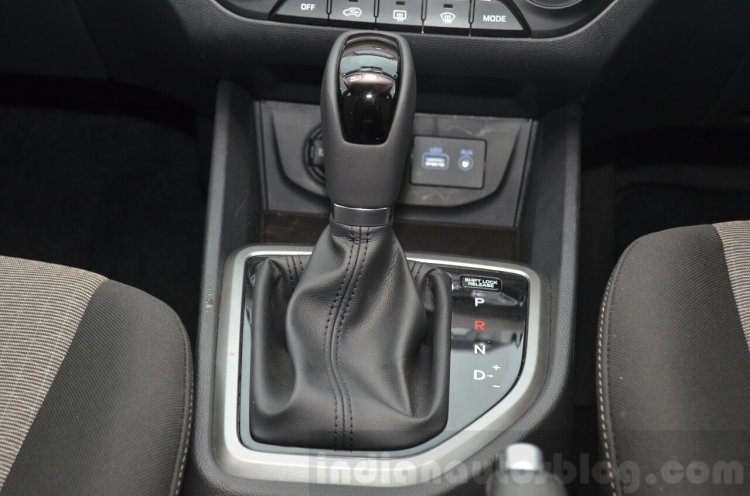
For those looking out to give the clutch pedal a miss, the 1.6-liter diesel variant of the Creta also gets a 6-speed automatic transmission. Simply put, this gearbox likes to be driven in an unhurried way, and seems to have been tuned for cruising and urban driving conditions specifically. Yes, it does feel a bit slow for the enthusiast, but for the sort of buyer it is aimed at (one who is looking at ease of use), the 6-speed auto does a fine job.
While it does come with a manual tip-tronic mode, we found it best to leave it in full auto mode, where upshifts usually occur at the 2,000 rpm mark.
Coming to the petrol engine, which is expected to account for a minor percentage of sales. Again, the engine is shared with the Verna, and is the 1.6-liter Dual VTVT motor with 123 PS and 151 Nm of torque, but on the Creta it gets a 6-speed manual transmission.
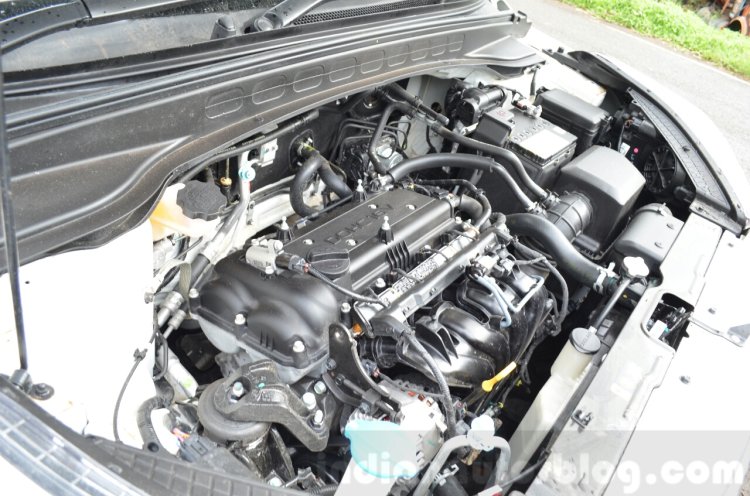
The positive attributes of this engine are its NVH characteristics - it’s extremely smooth, the noise is well controlled and vibrations are non-existent. Sadly, things go downhill from here as this engine struggles to pull the Creta with any excitement.
With three people on board and the boot filled to 80 percent capacity, we found ourselves working extra hard on the gearshifts to get a move-on. The torque band of this engine is narrow - between 2,500-4,500 rpm is where this engine works best. In-gear acceleration even at speeds from 80 km/h in 5th gear feels very slow, and an overtaking maneuver almost always requires shifting down one or two gears.
The only takeaway is that the gearshifts feel very smooth as does the clutch. If you’re confident that you’ll be driving in an unhurried manner, and your monthly mileage makes no sense for a diesel vehicle, the Creta petrol is worth a look. Else, we wouldn’t really recommend it.
Ride and Handling:
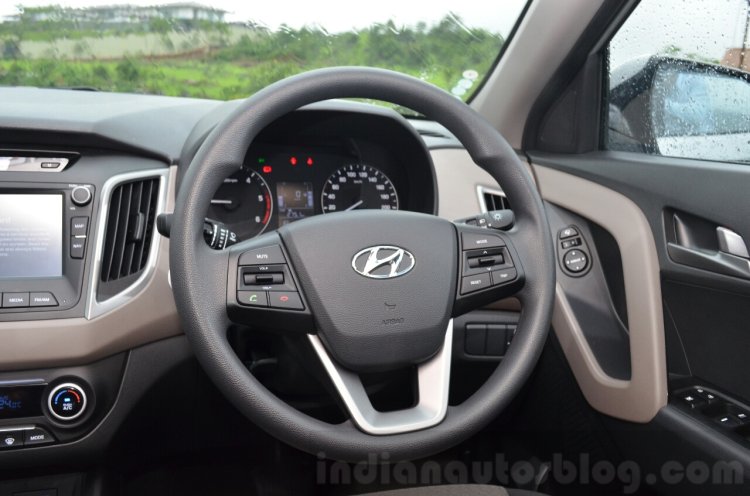
Hyundai have actually achieved a well chosen balance between ride and handling, wherein the former is obviously given greater importance, but like other Hyundai products, the latter doesn’t take a back seat.
The McPherson strut at the front gets a Hydro Rebound Stopper for reduced rebound shocks, while the coupled torsion beam axle at the rear was re-engineered for Indian road conditions for better ride quality.
Ride quality on the Creta is comfortable to say the least in city driving conditions, and we found the SX (O) with the 17-inch alloys to be a bit more comfortable over bad roads. As speeds increase, the suspension shows its stiffer side, which brings us to the handling of the Creta, what we think is the best handling Hyundai in the country.
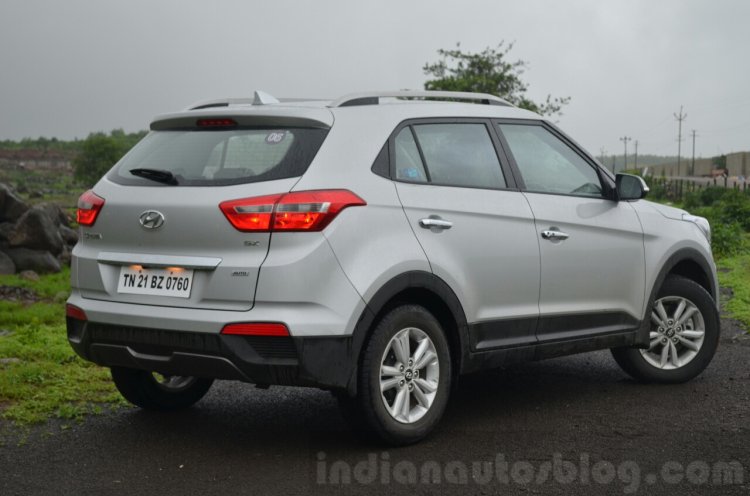
Body roll is evident, but well controlled for a compact SUV, and we’re happy to report that there are no nasty surprises in store. The 'HIVE' body structure, what is basically composed of high-strength materials for increased stiffness of the body shell, came to light on the twisty road sections of Aamby Valley: The compact SUV feels stiffer and more confident in taking a corner than any other Hyundai product we have sampled. However, the Renault Duster is still the benchmark in the ride and handling department, the Creta hasn't stolen that crown just as yet.
The steering on the Creta feels a bit artificial, but again, is a marked improvement over other Hyundais. For the sort of family buyer it is aimed at, this balance between ride and handling should do just fine.
Brakes and Safety:
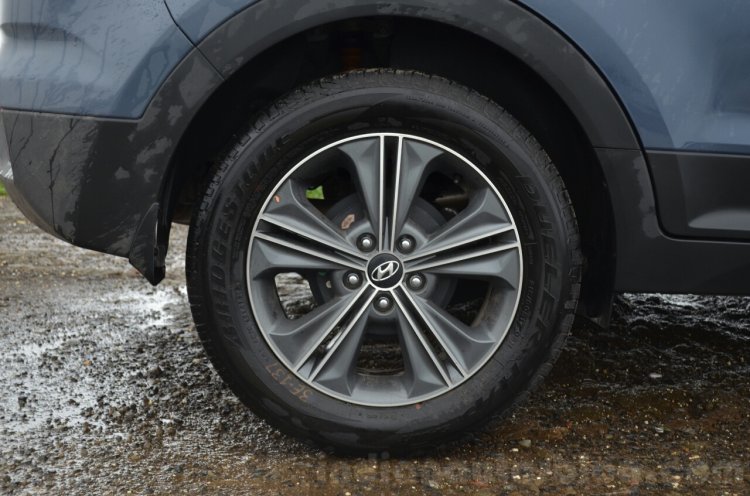
All variants of the Creta get ABS with EBD as standard. On the SX (O), the Creta offers side and curtain airbags, VSM, ESC and Hill Assist Control in addition. Also, the HIVE body shell which features 5 roof cross memebers, a dual underbody load path and a ring structure design is claimed to offer improved cabin protection.
Braking is one of the strong points of the Creta, which does without rear discs but stays sure-footed nonetheless under hard braking. Taking into consideration that our drive took place under heavy rains, with slippery roads being dime-a-dozen, the Creta certainly never made us lose confidence.
Fuel Efficiency:
HMIL claims that the Creta will achieve 15.29 km/l (petrol), 19.67 km/l (1.6L diesel MT) and 17.01 km/l (AT) according to ARAI-tested figures.
Prices:
The Creta petrol costs from INR 8.59 lakhs to INR 11.19 lakhs, the 1.4-liter diesel from INR 9.46 lakhs to INR 11.45 lakhs, the 1.6-liter diesel from INR 11.59 lakhs to INR 13.6 lakhs and the diesel AT at INR 13.57 lakhs, ex-Showroom, New Delhi.
Interestingly, HMIL claims that the Creta will be the most economical car to maintain in its segment. The presentation slide above compares the cost of major components with Competition D and Competition T, which should refer to the Duster and Terrano. Also, HMIL is offering a 3-year/unlimited kms warranty on the Creta, which competitors do not offer.
Verdict:
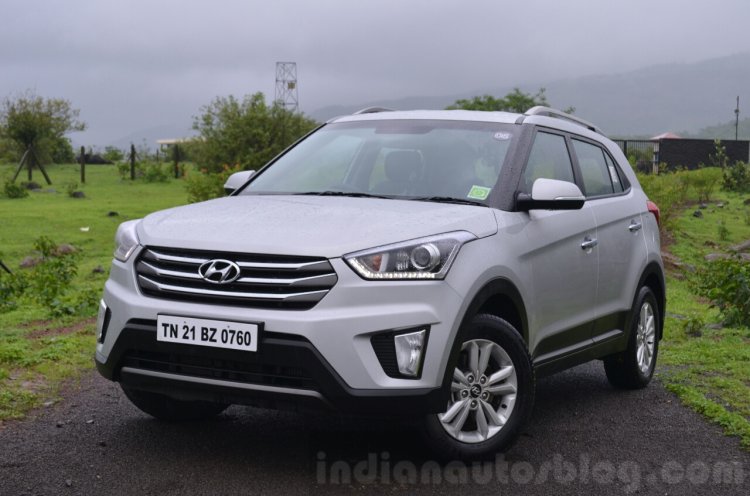
We’re tempted to say that the Creta follows a smaller, more affordable concept of Skoda’s Yeti - a compact, well-built, well-engineered crossover which comes with a feel-good factor. You get a similar feeling when you're inside the Creta; that you’ve bought a high-quality product, the slightly premium price not withstanding.
For buyers comparing the Creta with a Mahindra Scorpio, it’s a bit like comparing apples and oranges, as the build quality and driving finesse are several notches better on the Hyundai, while the Scorpio gets the convenience of seating 7 occupants.
In terms of pure appeal, the Duster is the closest rival to the Creta but the former offers a lacklustre cabin, and its features aren’t anything to write home about either. The top-end Creta MT is a good INR 1.1 lakh more expensive than the top-end Duster 2WD. In no way would we suggest that the Creta is aggressively priced, but for its price, HMIL is delivering a high-quality product.
At the end of the day, the Creta, we think, is positioned towards that audience which wouldn’t mind paying a little extra to have a premium experience.
Will we recommend the Creta? We'll certainly recommend the 1.6L diesel, in both manual and AT guise. We also think the additional price the Creta commands over the Duster is justified all things considered.

